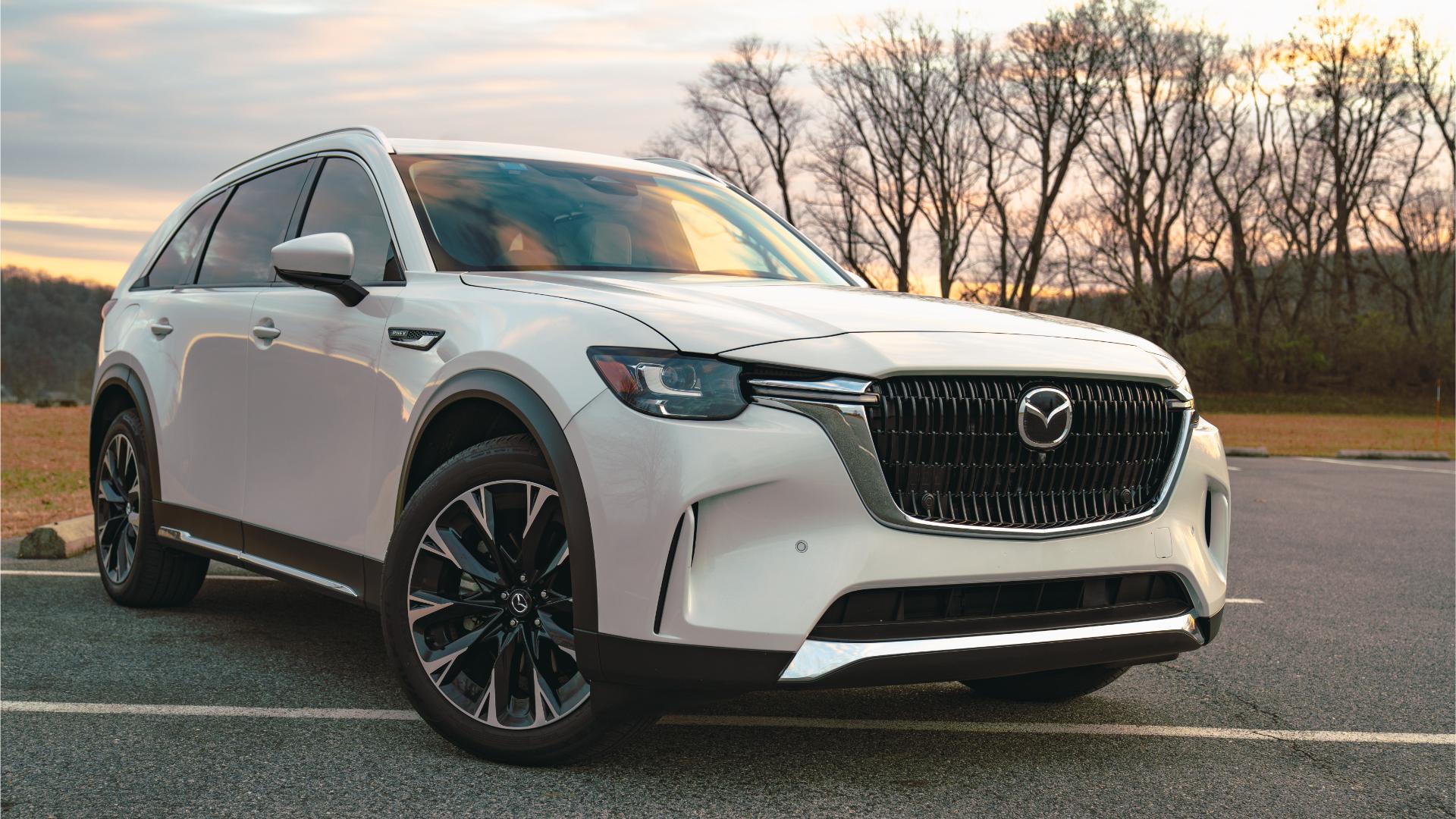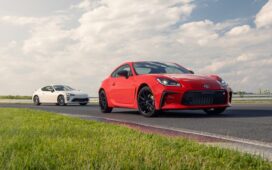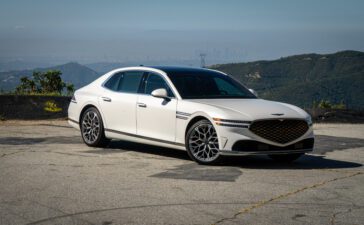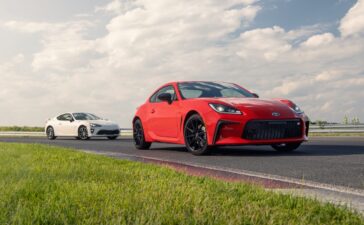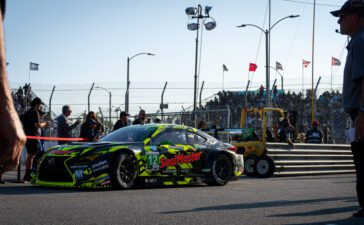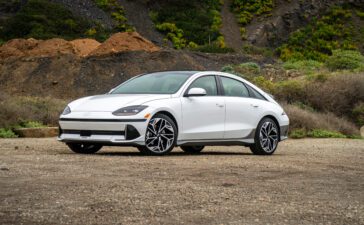The year is 2003. You’re six years old, staring out the window in the backseat while the rest of your family piles into Mom’s Toyota Camry. As the car begins to leave the driveway, you overhear your parents workshopping what they’ll say when you arrive at the car dealership, where the plan is to ditch the cramped sedan for something with more space to stretch our legs, a larger vehicle that can seat five or six passengers instead of just four. Were it two decades later, maybe you’d soon find yourself in the second row of a 2024 Mazda CX-90 PHEV. But it’s the aughts – a time when gas is cheap and climate activisim is for tree huggers!
When your sister was born at the dawn of the millennium, your parents knew deep down it wouldn’t be long before cribs and diapers turned to pool parties, Scout meetings, dance lessons, and baseball games. Before highchairs and strollers became awkward first dates and driver’s tests. As such, your parents close their eyes, take a deep breath, and reluctantly agree: It’s time for a minivan. A sliding door, cheeto-stained, take-the-kids-to-soccer-practice minivan. In 2003, a minivan driver is that dilapidated lettuce wilting in the garden, scorched by the ultraviolet rays of a Ford Windstar.
[Button id=”363″]
As reality sets in, your parents are interrupted by a salesman pointing them in another direction. What’s this? He’s showing them a newer class of vehicle, one which can fit the same number of occupants as a minivan, but with sportier styling, raised suspension, and four-wheel drive. Of course, I’m talking about the family SUV. Little did we know it would fundamentally transform the automotive industry for the next 20-plus years.
The PHEV (plug-in hybrid electric vehicle) version of the 2024 Mazda CX-90 showcases not only how the SUV has changed since that day we drove off the lot in a new – ahem, Eddie Bauer Edition – Ford Explorer, but how the rest of the world has changed around it. Shaped by pointless geopolitical conflict, the growing popularity of the climate movement, and phrases like “economic uncertainty” floating around as if the economy had ever been certain, the CX-90 is a reverse time capsule into an idealized version of the future, one in which younger generations can afford to have passengers, let alone a new third-row SUV to put them in.
Skip to section:
Pricing and specs overview
In Mazda’s defense, the CX-90 is far from the worst offender in the arms race upmarket, and it’s certainly not responsible for the financial misfortunes of the millennial generation nor its successors. When adjusted for inflation, the mild-hybrid Mazda CX-90 is more affordable to start than its predecessor, the CX-9, was 10 years ago. That means you can take home a no-frills base model CX-90 for $39,595 assuming your dealer has one in stock or you can wait months for a factory order to arrive. Meanwhile, the Mazda CX-90 PHEV starts at $49,945 – over $10K more! What gives?
While I haven’t driven the plugless hybrid Mazda CX-90, nor has anyone else at Acceleramota, it’s worth noting that the cheaper CX-90 packs an extra pair of pistons. Under the hood of this cordless commuter is an inline-six-cylinder, the first of its kind for Mazda, turbocharged to make 280 horsepower in the Turbo Select, Turbo Preferred, Turbo Preferred Plus, and Turbo Premium variants. Stick with me now, because, for some godforsaken reason, Mazda sells the CX-90 in 11 different trim levels. But to keep it simple, I like to think of the CX-90 as three separate models with each offered in a few vaguely distinct flavors. They are as follows: Mazda CX-90 Turbo (no, not that one), Mazda CX-90 Turbo S (not that one either), and Mazda CX-90 PHEV (yes, this one). Got it? Good!
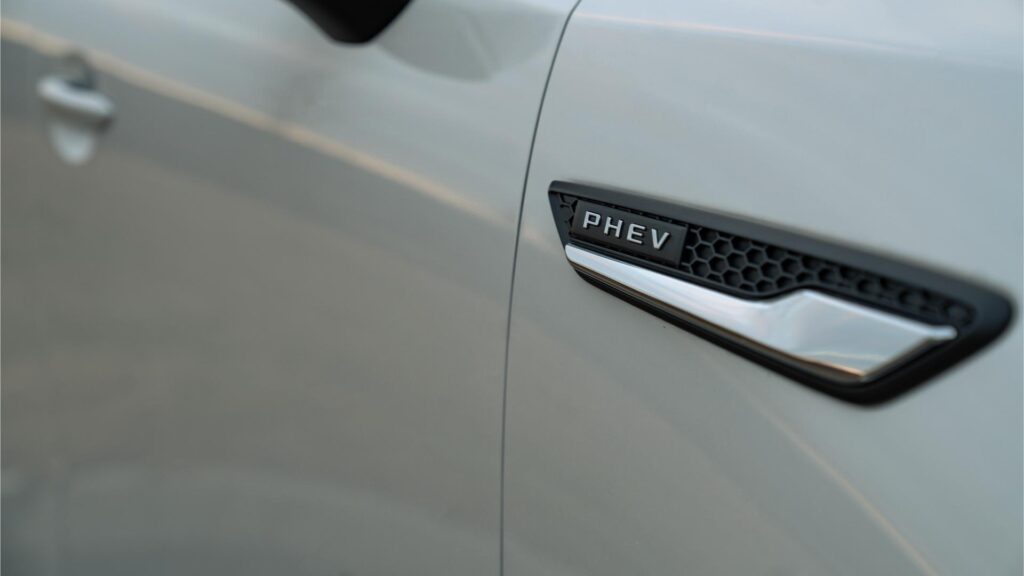
Both the CX-90 Turbo ($39,595+) and the CX-90 Turbo S ($51,750+) use the same 3.3-liter turbocharged e-Skyactiv G engine. However! Whereas the five CX-90 Turbo trims make 280 horsepower and 332 pound-feet of torque, the three CX-90 Turbo S make 340 horsepower and 369 pounds of torque through the magic of high-octane fuel tuning. The caveat is that while the Turbo models were designed to run on cheaper 87-octane gas, Mazda recommends 93-octane for the Turbo S. That’s an extra ten grand and some change for a slightly faster 0-60 time and shinier, machine-cut wheels. Barring the unlikely event that you’re hauling your oversized grocery getter to a racetrack, it’s safe to say the standard Turbo is the better value for most people. But it’s not necessarily the best. For some, the Mazda CX-90 PHEV is the answer.
| Base price: | $49,945 |
| As-tested price: | $51,795 |
| Engine: | 2.5-liter e-Skyactiv G four-cylinder + 68kW electric motor |
| Transmission: | 8-speed automatic |
| Drivetrain: | All-wheel drive |
| Power: | 323 hp @6,000 rpm |
| Torque: | 369 lb-ft @ 4,000 rpm |
| Weight: | 5,243 lbs |
| 0-60 mph: | 6.2 seconds |
| MPG: | 24 mpg city, 27 mpg highway, |
| MPGe: | 56 MPGe |
| Observed MPG: | 24.4 mpg |
| Fuel capacity: | 18.5 gallons |
From the outset of 2024, more than 7,000 dealerships registered with the IRS will offer point-of-sale tax rebates to EV buyers – and, yes, some plug-in hybrids count. Better yet, if you prefer to lease, Mazda will knock $7,500 off your bill without jumping through hoops to find a participating dealer. That brings the effective base price of a new Mazda CX-90 PHEV down from $49,945 to $42,225, making the PHEV a much more compelling proposition. To make up the remaining difference, only the CX-90 PHEV comes standard with a power moonroof and heated seats made from real leather.
Now it’s a matter of which is more compatible with your lifestyle: a turbocharged straight-six with an e-assist mild hybrid system or a naturally aspirated four-cylinder backed by a 68-kW electric motor powered by a 17.8-kWh battery. I’ll let you decide.
Electric range and fuel economy
Straddling the fence between the lower fuel cost of the Turbo and the refined performance of the Turbo S, the plug-in hybrid Mazda CX-90 is for the crowd that wants fast and frugal. At least under the right conditions. Sure, you’ll still need to fill it up with premium to make the most of your ride, but the idea is to offset that cost by scarcely burning fuel at all.
In EV mode, a small 17.8-kWh lithium-ion battery pack located under the floor powers the 68-kilowatt electric motor found in the transmission tunnel for up to 26 miles without ever firing up the engine. In Normal mode, where the engine and electric motor work in tandem, that range is less predictable since it fluctuates based on road conditions and your own individual driving patterns and behaviors. In other words, no I cannot conclusively tell you for a fact you’ll see anything close to the equivalent of 56 mpg as the EPA’s MPGe estimate suggests because it’s entirely contingent on when, where, and how you drive.
In line with most plug-in hybrid SUVs of its stature, Mazda says it takes 11 hours with a standard 120-volt (Level 1) outlet or 2 hours and 20 minutes using a 240-volt (Level 2) electrical setup. I’m quoting Mazda on those figures because my best bet for EV charging was one of two dual-port FLO units a 20-minute drive from my apartment on a street that apparently served as the unofficial meetup spot for gas cars with their hazard lights on and ineptly parked Teslas keeping the second, unused cable at each station just enough out of reach to be infuriating.

For the record, I’m a recent convert to the philosophy popularized by Toyota that plug-in hybrids are a fast track to harm reduction. It’s just that the benefits – financial, environmental, or otherwise – only come into play for the owners who commit to a habitual charging routine. When the battery dies in a full BEV (battery-electric vehicle) like a Tesla Model Y or Ford Mach-E, the car won’t move. That a plug-in hybrid is drivable indefinitely without ever actually plugging it in is a double-edged sword. On one hand, range anxiety is all but assuaged. On the other, the Mazda CX-90 PHEV averaged 24.4 mpg during my weeklong excursion without charging access. That isn’t far off from the 25 mpg combined estimated by the EPA for ostensibly gas-guzzling sixer gets. Given the choice, without a home charging solution, I personally would go for the inline-six, if only because it sounds like this.
Curiously, you never really have to plug in a plug-in hybrid. That’s as true for the Mazda CX-90 PHEV as it is for our Alfa Romeo Tonale. Because the battery ran out of juice in our press car not long after escaping the city to take photos for this review, and I didn’t have 140 minutes of downtime to let it sip, the Mazda CX-90 PHEV averaged 24.4 mpg throughout my weeklong excursion. Meanwhile, the EPA rates its ostensibly gas-chugging, six-cylinder cousin at a commensurate 25 mpg combined. Go figure! Still, for the homeowner with a commute shorter than 26 miles and a place to charge while you’re at work, you could get away with never spending a dime on gas most days. Because it’s used in EV mode more than half the time, our Tonale averaged 84 mpg this month and it’s rated for 29 mpg or 77 MPGe combined. Whether or not the fuel savings justify the premium for the PHEV is on you.
Design, interior, and infotainment
For a full-size crossover SUV, the Mazda CX-90 carries an outstanding road presence. It sits high on your pick of 19- or 20-inch wheels with a wide, imposing stance. The roofline slopes back across an aerodynamic coupe-like frame. And its front fascia, characterized by angry headlights and a bold, assertive grille to match, lets you know it means business. I only wish our loaner came in that fierce artisan red Mazda uses in most of its marketing for the CX-90. The design is a subtle but effective step up from that of the CX-9.
When you open the door to the Mazda CX-90, the inside makes one hell of a first impression, regardless of spec. As you can see from the photos, the cabin emanates a level of ambient grandeur more impressive than that of a new BMW X7, if only because it defies expectations. For most, “upscale” isn’t the first word that comes to mind when you bring up Mazda. But that perception is changing, in large part because its ostentatious interiors punch above their weight, presenting a clean minimalist aesthetic, complete with faux woodgrain accents, abundant LED lighting, ventilated seats with adjustable lumbar support, and the gratuitous touch of a leather-wrapped shift knob – because why the hell not?

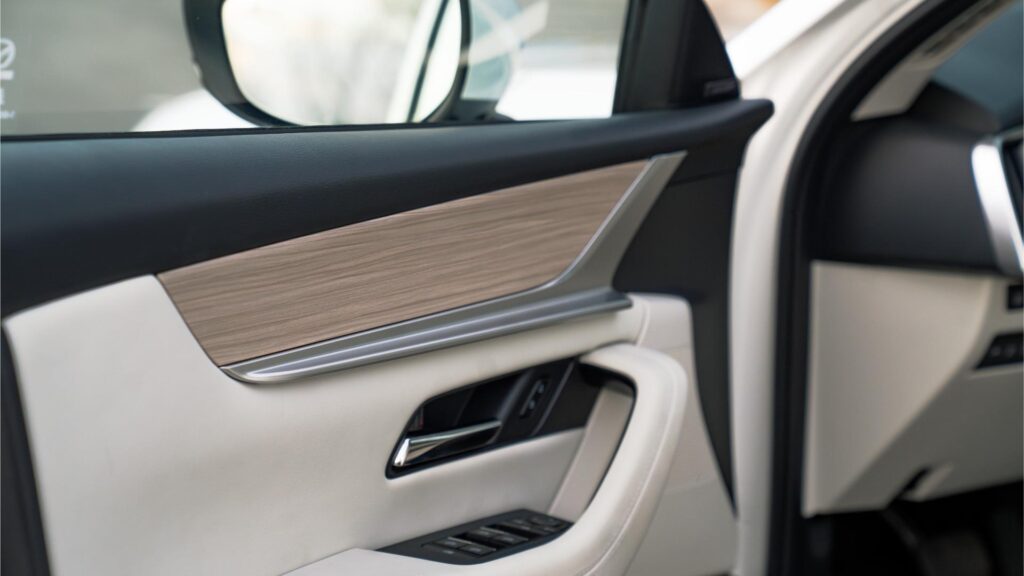

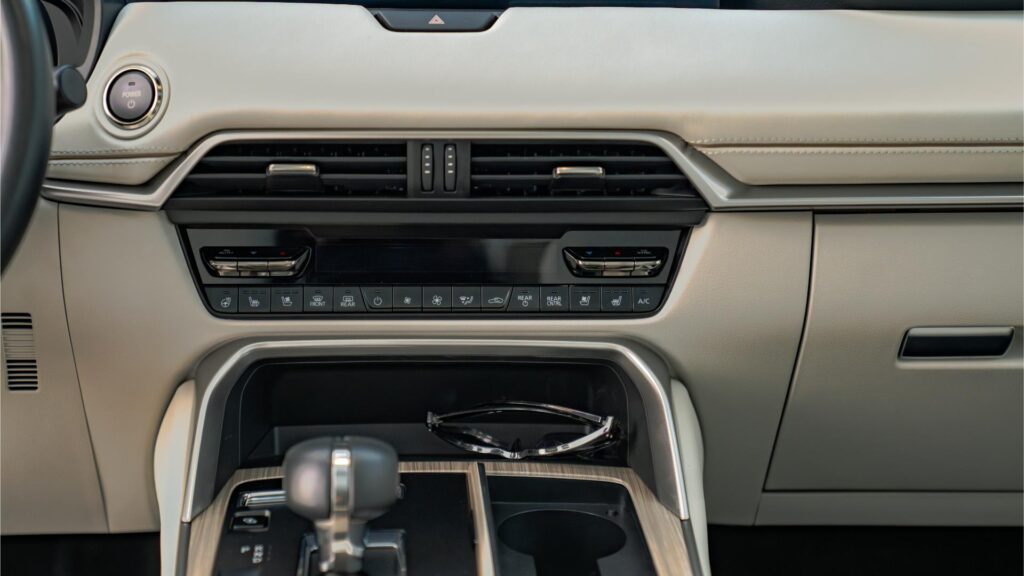

Inside and out clear Mazda is reinventing itself as an entry-level luxury brand, and the CX-90 PHEV fills the space somewhere between the Toyota Grand Highlander Hybrid and the Lexus TX. In fact, as far as plug-in hybrids go, until the 2024 Hyundai Santa Fe PHEV drops this spring, the CX-90 PHEV’s closest rival might very well be the Chrysler Pacifica. That’s right, the minivan. But compared to the Pacifica, the Grand Highlander, or the Honda Pilot for that matter, one of the CX-90’s undeniable shortcomings is its cramped third row, and by extension, limited cargo space. With the second and third row folded down, its 75.2 cubic feet of space pales in comparison to the 140.5 cubic feet of the Chrysler Pacifica, and it doesn’t fare much better next to the Grand Highlander’s 97.5 cubic feet. Although I could fit plenty of gear in the back, I also don’t have kids or friends. At full occupancy, the 14.9 cubic feet left with all of the seats up won’t leave much room for luggage on family road trips.
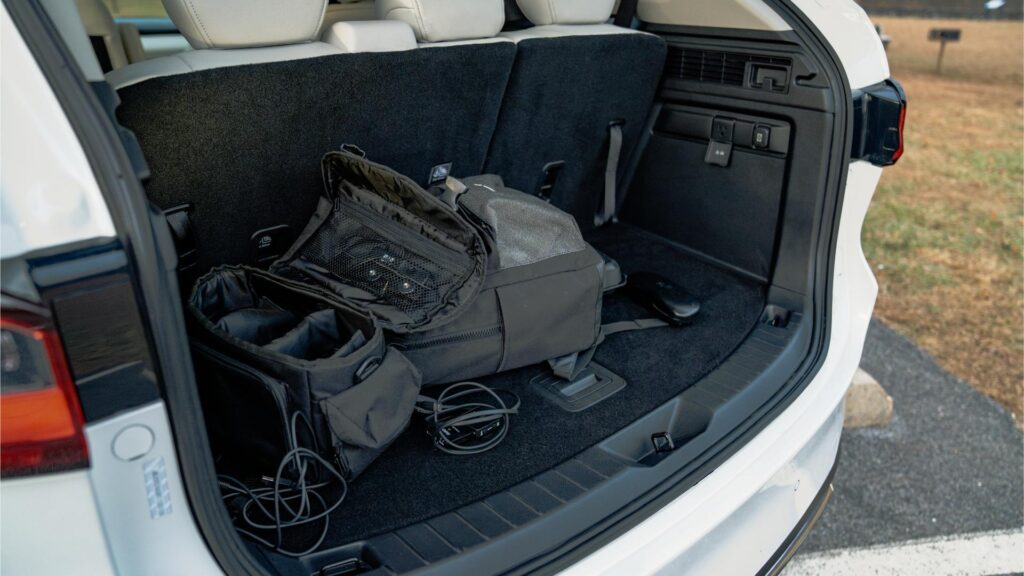
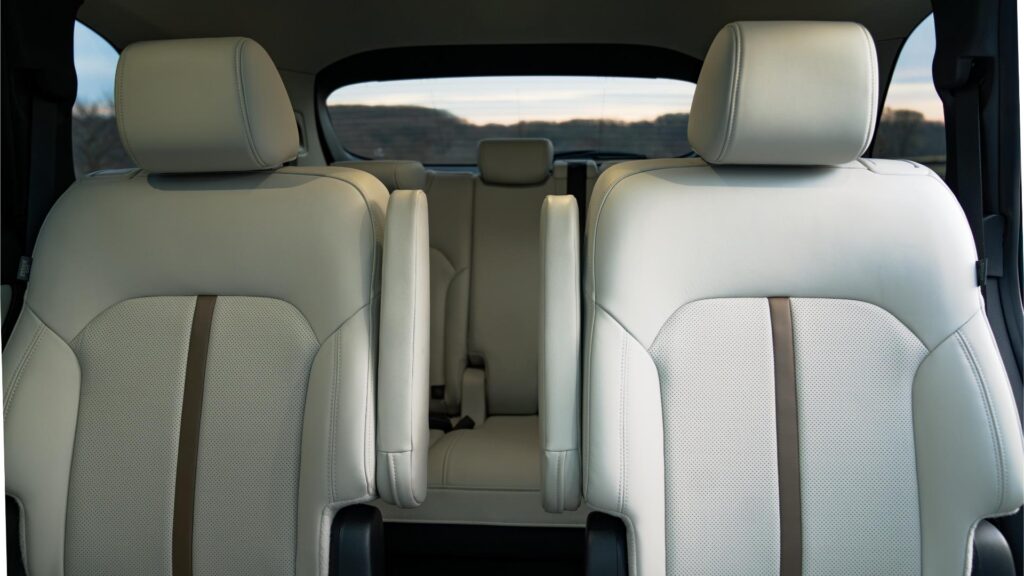
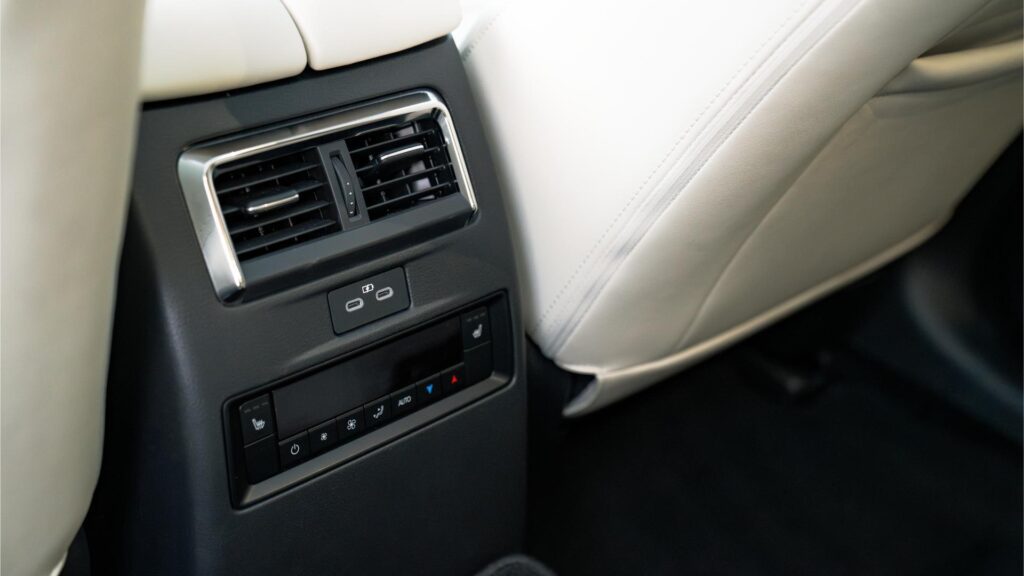
Also polarizing, at least for anyone with a preference for touchscreens, is the Mazda Connect infotainment system you’ll find on the CX-90 PHEV’s modest 10.25-inch center display. As is the case for the rest of Mazda’s lineup, navigating the proprietary software involves twisting a rotary dial around in the center console instead of tapping the screen directly. My current car and the one before that both took the same approach, and both manufacturers abandoned the dial with subsequent models. Because they were wrong. I’m with Mazda on this one, the rotary dial is a safety feature more than anything, no matter what my friend Adam said. Once you get used to it, you’ll see how much easier it is to keep your eyes on the road while adjusting your music or setting a Google Maps destination in your periphery than trying to do so on a touchscreen. That said, if you insist on being wrong (like Adam), the top CX-90 PHEV Premium Plus trim has a larger 12.3-inch display that supports touch controls for Apple CarPlay and Android Auto.
Overall, Mazda Connect as an operating system is mostly inoffensive, even if I do prefer Android Automotive and Stellantis’s Android-derived Uconnect. Other than Apple CarPlay, which took some time digging under several layers of submenus, I had no problems flipping through settings to customize driver assistance preferences, manage Bluetooth connections, and fine-tune my sound profile to make my “Music to Flex To” playlist go hard on the Bose Centerpoint audio system. Seriously, from the acoustics to the bass, the upgraded 12-speaker surround sound casts a wide soundstage that one-ups some cars I’ve driven that cost twice as much as the Mazda CX-90 PHEV (looking at you, Maserati Grecale Trofeo).
Performance and powertrain
Apart from the charging logistics, which evidently isn’t one-size-fits-all, the Mazda CX-90 does straddle the fence between the cheaper fuel demands of the Mazda CX-90 Turbo trims and the speed advantage of the Turbo S. Even though its 323 horsepower and 369 pound-feet of torque fall short of the Turbo S and despite clocking in at over 5,000 pounds, the CX-90 PHEV’s impressive hybridized innards gave it the boost it needed to beat out the straight-six in every speed run conducted by Car and Driver. More horsepower and less weight don’t cut it when the PHEV’s electric motor pushes 199 pound-feet of torque at just 400 rpm.
The plug-in hybrid (PHEV) version of the 2024 Mazda CX-90 is one of the finer examples of a company working within those parameters to make a truly great capital ‘S’ SUV – that is, a three-row unibody truck as suitable for hauling groceries as it is cornering on sharp turns or taking offroad, all from a four-cylinder engine married to a small electric motor. From what I’ve seen of the engineers who worked on it, there’s an unexpected sense of fervent passion for the project woven into the soul of the CX-90. As chunky as it is, it really does drive like a sports sedan. The steering is balanced – not too light nor too heavy – and somehow it feels nimble. As long as you don’t mind the bumpy ride that occasionally accompanies its raw sportscar-like suspension, the CX-90 can be a blast to drive, especially when thrown into sport mode.

By flicking up and down the Mi-Drive switch in the center console, you can alternate between four drive modes, each with its own intended purpose:
- Sport mode combines the full power of the engine and electric motor for faster acceleration
- EV mode uses only the electric motor for zero-emission driving but greatly reduces performance
- Normal mode offers a balanced mix of electric and gas as needed
- Off-road mode improves traction so you don’t spin out or fall off a cliff
- Towing mode adjust gearing and power delivery for pulling stuff
One glaring drawback to choosing the CX-90 PHEV is its inferior 3,500-pound tow limit. For comparison, the standard CX-90 can pull up to 5,000 pounds at most trim levels. Hamstrung towing capacities are a common, longstanding complaint among PHEV critics. When my dad and I were shopping around on CarGurus to replace his Ford Ranger with a more fuel-efficient SUV capable of towing at least 2.5 tons, I was aghast at how sparse the selection was with a budget in the $50K range, especially for third rows. Sadly, for that reason, the CX-90 PHEV didn’t make the cut. The Jeep Grand Cherokee 4xe did.
[Button id=”422″]
Final thoughts
As someone with no kids and no friends living in a city with convenient access to public transit, the Mazda CX-90 is excessive. As someone who appreciates any vehicle that’s quick around corners, the Mazda CX-90 is shockingly fun to drive. Unfortunately, I’m not convinced the person shopping for a third-row SUV cares as much about gear ratios and steering weight as they do cargo space and comfort. With the CX-90, Mazda took a series of bold risks, most of which no one asked for. As a three-row crossover SUV that looks more expensive than it is, it would have sold on that merit alone.
The CX-90 is interesting, if imperfect, in a segment overrun with vehicles as indistinguishable on the outside as they are under the hood. Just as Mazda didn’t need to build a new six-cylinder architecture from the ground up for this, it also didn’t have to make that same vehicle its first mainstream plug-in hybrid. But I’m glad it did. Because while that third row of seats is as tight as the suspension, it makes good on the promise of the sport utility vehicle: to combine fun and function in a vehicle big enough to fit a family while being less boring than a minivan. You can’t make an SUV that handles like this without some trade-offs. Provided its aggressive styling and athletic performance are enough to sacrifice a few inches of legroom, the Mazda CX-90 is a strong contender for the best SUV in its class.
Whether the straight-six or the plug-in hybrid is the more cost-effective option mostly comes down to your living situation. Unless you have access to home charging, the fuel savings will almost certainly not be worth the cost and inconvenience of public charging. When I’m getting around 25 mpg either way, I’d rather have a turbocharger and a guttural exhaust note. But maybe I’m just built different.

